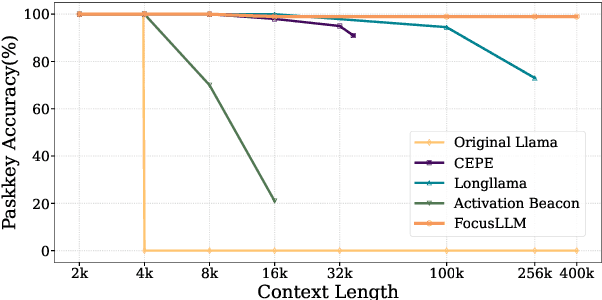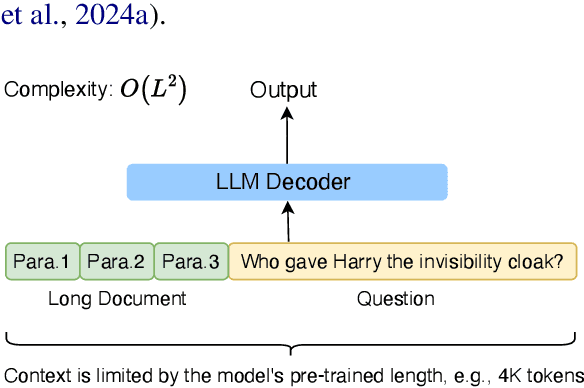Yike Zhang
LLMs as Educational Analysts: Transforming Multimodal Data Traces into Actionable Reading Assessment Reports
Mar 03, 2025Abstract:Reading assessments are essential for enhancing students' comprehension, yet many EdTech applications focus mainly on outcome-based metrics, providing limited insights into student behavior and cognition. This study investigates the use of multimodal data sources -- including eye-tracking data, learning outcomes, assessment content, and teaching standards -- to derive meaningful reading insights. We employ unsupervised learning techniques to identify distinct reading behavior patterns, and then a large language model (LLM) synthesizes the derived information into actionable reports for educators, streamlining the interpretation process. LLM experts and human educators evaluate these reports for clarity, accuracy, relevance, and pedagogical usefulness. Our findings indicate that LLMs can effectively function as educational analysts, turning diverse data into teacher-friendly insights that are well-received by educators. While promising for automating insight generation, human oversight remains crucial to ensure reliability and fairness. This research advances human-centered AI in education, connecting data-driven analytics with practical classroom applications.
SSDD-GAN: Single-Step Denoising Diffusion GAN for Cochlear Implant Surgical Scene Completion
Feb 08, 2025



Abstract:Recent deep learning-based image completion methods, including both inpainting and outpainting, have demonstrated promising results in restoring corrupted images by effectively filling various missing regions. Among these, Generative Adversarial Networks (GANs) and Denoising Diffusion Probabilistic Models (DDPMs) have been employed as key generative image completion approaches, excelling in the field of generating high-quality restorations with reduced artifacts and improved fine details. In previous work, we developed a method aimed at synthesizing views from novel microscope positions for mastoidectomy surgeries; however, that approach did not have the ability to restore the surrounding surgical scene environment. In this paper, we propose an efficient method to complete the surgical scene of the synthetic postmastoidectomy dataset. Our approach leverages self-supervised learning on real surgical datasets to train a Single-Step Denoising Diffusion-GAN (SSDD-GAN), combining the advantages of diffusion models with the adversarial optimization of GANs for improved Structural Similarity results of 6%. The trained model is then directly applied to the synthetic postmastoidectomy dataset using a zero-shot approach, enabling the generation of realistic and complete surgical scenes without the need for explicit ground-truth labels from the synthetic postmastoidectomy dataset. This method addresses key limitations in previous work, offering a novel pathway for full surgical microscopy scene completion and enhancing the usability of the synthetic postmastoidectomy dataset in surgical preoperative planning and intraoperative navigation.
Beyond Instructed Tasks: Recognizing In-the-Wild Reading Behaviors in the Classroom Using Eye Tracking
Jan 30, 2025



Abstract:Understanding reader behaviors such as skimming, deep reading, and scanning is essential for improving educational instruction. While prior eye-tracking studies have trained models to recognize reading behaviors, they often rely on instructed reading tasks, which can alter natural behaviors and limit the applicability of these findings to in-the-wild settings. Additionally, there is a lack of clear definitions for reading behavior archetypes in the literature. We conducted a classroom study to address these issues by collecting instructed and in-the-wild reading data. We developed a mixed-method framework, including a human-driven theoretical model, statistical analyses, and an AI classifier, to differentiate reading behaviors based on their velocity, density, and sequentiality. Our lightweight 2D CNN achieved an F1 score of 0.8 for behavior recognition, providing a robust approach for understanding in-the-wild reading. This work advances our ability to provide detailed behavioral insights to educators, supporting more targeted and effective assessment and instruction.
LUCY: Linguistic Understanding and Control Yielding Early Stage of Her
Jan 27, 2025Abstract:The film Her features Samantha, a sophisticated AI audio agent who is capable of understanding both linguistic and paralinguistic information in human speech and delivering real-time responses that are natural, informative and sensitive to emotional subtleties. Moving one step toward more sophisticated audio agent from recent advancement in end-to-end (E2E) speech systems, we propose LUCY, a E2E speech model that (1) senses and responds to user's emotion, (2) deliver responses in a succinct and natural style, and (3) use external tool to answer real-time inquiries. Experiment results show that LUCY is better at emotion control than peer models, generating emotional responses based on linguistic emotional instructions and responding to paralinguistic emotional cues. Lucy is also able to generate responses in a more natural style, as judged by external language models, without sacrificing much performance on general question answering. Finally, LUCY can leverage function calls to answer questions that are out of its knowledge scope.
FreeCodec: A disentangled neural speech codec with fewer tokens
Dec 02, 2024Abstract:Neural speech codecs have gained great attention for their outstanding reconstruction with discrete token representations. It is a crucial component in generative tasks such as speech coding and large language models (LLM). However, most works based on residual vector quantization perform worse with fewer tokens due to low coding efficiency for modeling complex coupled information. In this paper, we propose a neural speech codec named FreeCodec which employs a more effective encoding framework by decomposing intrinsic properties of speech into different components: 1) a global vector is extracted as the timbre information, 2) a prosody encoder with a long stride level is used to model the prosody information, 3) the content information is from a content encoder. Using different training strategies, FreeCodec achieves state-of-the-art performance in reconstruction and disentanglement scenarios. Results from subjective and objective experiments demonstrate that our framework outperforms existing methods.
Surgical Depth Anything: Depth Estimation for Surgical Scenes using Foundation Models
Oct 09, 2024


Abstract:Monocular depth estimation is crucial for tracking and reconstruction algorithms, particularly in the context of surgical videos. However, the inherent challenges in directly obtaining ground truth depth maps during surgery render supervised learning approaches impractical. While many self-supervised methods based on Structure from Motion (SfM) have shown promising results, they rely heavily on high-quality camera motion and require optimization on a per-patient basis. These limitations can be mitigated by leveraging the current state-of-the-art foundational model for depth estimation, Depth Anything. However, when directly applied to surgical scenes, Depth Anything struggles with issues such as blurring, bleeding, and reflections, resulting in suboptimal performance. This paper presents a fine-tuning of the Depth Anything model specifically for the surgical domain, aiming to deliver more accurate pixel-wise depth maps tailored to the unique requirements and challenges of surgical environments. Our fine-tuning approach significantly improves the model's performance in surgical scenes, reducing errors related to blurring and reflections, and achieving a more reliable and precise depth estimation.
Mastoidectomy Multi-View Synthesis from a Single Microscopy Image
Aug 31, 2024Abstract:Cochlear Implant (CI) procedures involve performing an invasive mastoidectomy to insert an electrode array into the cochlea. In this paper, we introduce a novel pipeline that is capable of generating synthetic multi-view videos from a single CI microscope image. In our approach, we use a patient's pre-operative CT scan to predict the post-mastoidectomy surface using a method designed for this purpose. We manually align the surface with a selected microscope frame to obtain an accurate initial pose of the reconstructed CT mesh relative to the microscope. We then perform UV projection to transfer the colors from the frame to surface textures. Novel views of the textured surface can be used to generate a large dataset of synthetic frames with ground truth poses. We evaluated the quality of synthetic views rendered using Pytorch3D and PyVista. We found both rendering engines lead to similarly high-quality synthetic novel-view frames compared to ground truth with a structural similarity index for both methods averaging about 0.86. A large dataset of novel views with known poses is critical for ongoing training of a method to automatically estimate microscope pose for 2D to 3D registration with the pre-operative CT to facilitate augmented reality surgery. This dataset will empower various downstream tasks, such as integrating Augmented Reality (AR) in the OR, tracking surgical tools, and supporting other video analysis studies.
FocusLLM: Scaling LLM's Context by Parallel Decoding
Aug 21, 2024



Abstract:Empowering LLMs with the ability to utilize useful information from a long context is crucial for many downstream applications. However, achieving long context lengths with the conventional transformer architecture requires substantial training and inference resources. In this paper, we present FocusLLM, a framework designed to extend the context length of any decoder-only LLM, enabling the model to focus on relevant information from very long sequences. FocusLLM processes long text inputs by dividing them into chunks based on the model's original context length to alleviate the issue of attention distraction. Then, it appends the local context to each chunk as a prompt to extract essential information from each chunk based on a novel parallel decoding mechanism, and ultimately integrates the extracted information into the local context. FocusLLM stands out for great training efficiency and versatility: trained with an 8K input length with much less training cost than previous methods, FocusLLM exhibits superior performance across downstream long-context tasks and maintains strong language modeling ability when handling extensive long texts, even up to 400K tokens. Our code is available at https://github.com/leezythu/FocusLLM.
A Transcription Prompt-based Efficient Audio Large Language Model for Robust Speech Recognition
Aug 18, 2024Abstract:Audio-LLM introduces audio modality into a large language model (LLM) to enable a powerful LLM to recognize, understand, and generate audio. However, during speech recognition in noisy environments, we observed the presence of illusions and repetition issues in audio-LLM, leading to substitution and insertion errors. This paper proposes a transcription prompt-based audio-LLM by introducing an ASR expert as a transcription tokenizer and a hybrid Autoregressive (AR) Non-autoregressive (NAR) decoding approach to solve the above problems. Experiments on 10k-hour WenetSpeech Mandarin corpus show that our approach decreases 12.2% and 9.6% CER relatively on Test_Net and Test_Meeting evaluation sets compared with baseline. Notably, we reduce the decoding repetition rate on the evaluation set to zero, showing that the decoding repetition problem has been solved fundamentally.
Zero-Shot Surgical Tool Segmentation in Monocular Video Using Segment Anything Model 2
Aug 03, 2024Abstract:The Segment Anything Model 2 (SAM 2) is the latest generation foundation model for image and video segmentation. Trained on the expansive Segment Anything Video (SA-V) dataset, which comprises 35.5 million masks across 50.9K videos, SAM 2 advances its predecessor's capabilities by supporting zero-shot segmentation through various prompts (e.g., points, boxes, and masks). Its robust zero-shot performance and efficient memory usage make SAM 2 particularly appealing for surgical tool segmentation in videos, especially given the scarcity of labeled data and the diversity of surgical procedures. In this study, we evaluate the zero-shot video segmentation performance of the SAM 2 model across different types of surgeries, including endoscopy and microscopy. We also assess its performance on videos featuring single and multiple tools of varying lengths to demonstrate SAM 2's applicability and effectiveness in the surgical domain. We found that: 1) SAM 2 demonstrates a strong capability for segmenting various surgical videos; 2) When new tools enter the scene, additional prompts are necessary to maintain segmentation accuracy; and 3) Specific challenges inherent to surgical videos can impact the robustness of SAM 2.
 Add to Chrome
Add to Chrome Add to Firefox
Add to Firefox Add to Edge
Add to Edge